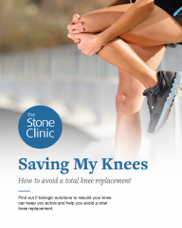Meniscus Replacement in Children
The meniscus is the fibrous cartilage in the knee joint. It protects the bone’s surfaces from impact, diffuses forces, and provides stability. When children tear their meniscus, it can often be repaired. But sometimes it is resected (cut out), leaving the child without this key structure. The loss of the meniscus is fatal for the knee.

The lateral (outside) part of the knee is the most sensitive to any meniscus cartilage loss in children—but the loss of any significant portion of the meniscus cartilage leads to pain, swelling, and early arthritis.
The incidence of such tears is about 61 per 100,000 people each year. Yet the repair/replacement ratio is well under 10% for repair, and only 0.01% for replacement. Why?
Meniscus regeneration and replacement in children is a growing field, though at present it is unfortunately small. One reason for this is that, in children who still have open growth plates (i.e., their bones are still growing), surgeons sometimes tell parents to wait until growth is finished before risking surgery. Their concern is that the growth plate might be injured, leading to growth arrest and deformity. This fear, however, must be balanced against some facts and recent developments.
First, if a child loses the entire meniscus, there is nearly a 100% chance of early arthritis. The chance is greater than 90% if they lose the posterior horn of the tissue, which absorbs the most force. The earlier the meniscus tissue is repaired, regenerated, or replaced, the less damage occurs.
Too many doctors still tell young patients and their parents to wait until they are older to treat the loss of meniscus. But modern techniques of meniscus transplantation do not require permanent stitches to be used—and the child’s growth plates can be protected by creating very small drill holes above the plate. Thus, waiting for further growth is unwise. Loss of the meniscus, even part of it in young knees, likely dooms the child to a future of arthritis.
Another concern is whether or not a donor meniscus will grow with the child, or how long it will last. Unfortunately, there are as yet no long-term studies of meniscus replacement in children published in the medical literature. But what we have seen in our own meniscus replacement practice over the last 35 years has been promising. No meniscus transplant placed in a child by us has been replaced due to growth mismatch.
The story is similar for meniscus regeneration. A collagen meniscus implant (CMI) that can induce regrowth of the meniscus tissue upon a trellis-like structure is now available. This CMI has been used in over 5,000 adult cases and has demonstrated successful tissue regrowth in multiple clinical trials. Logically, children should be able to re-grow their tissue even better than adults—yet the device is not commercially supported at this time. Meniscus regeneration templates will return to the marketplace in the near future.
Lastly, the surgical techniques and instruments for meniscus repair, regeneration, and replacement have improved dramatically. The reasons for utilizing these new techniques to protect injured knees should override excuses from the past, especially given the consequences of tissue removal alone. Yet in reality, meniscus transplantation is a technically tricky operation requiring significant experience. In the absence of insurance reimbursement, few centers have developed that know-how.
Sometimes, in medicine and surgery, all that parents and doctors have to go on is common sense, experience, and probabilities of success. We know that meniscus injuries are devastating to the knee. We know how to regenerate and replace them, even if we cannot yet guarantee they will last or protect the joint the way the original meniscus did. But without a large multicenter study with long-term data, many insurance plans won’t agree to reimburse these procedures. Common sense says they should. Children’s knees say they must.
Article originally published on July 30, 2017. Updated & republished May 2, 2021 by Kevin R. Stone, MD with scientific and content updates.


